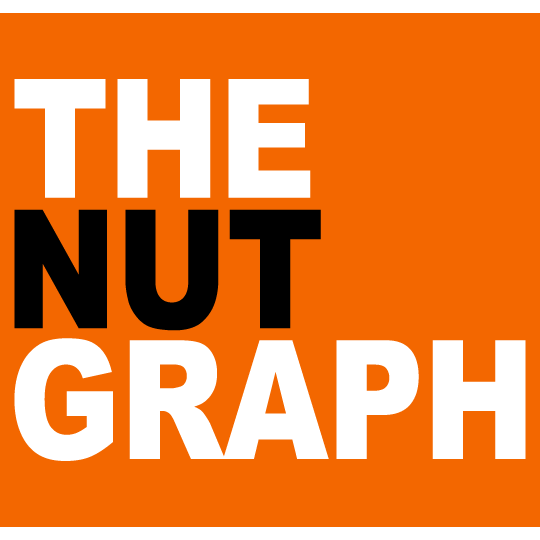
Wayang Rakyat at The Curve, 2007 (© Khoo Eng Yow)
THE Malay word for “theatre” is “wayang”. But say the word “wayang” and the first thing many of us would associate it with is “kulit”. Small-scale, community-focused, traditional; of yellow lights and opaque screens; tinny voices, dalang and gamelan.
Funny how the multifaceted nature of the English word “theatre” — with its many modes, techniques and imputations, from classical and naturalistic to postmodern and expressionistic — seems to get lost in translation, rendering it a singular traditional form. Perhaps it’s a touch myopic to think that “wayang” is confined to “wayang kulit”. I am guilty of the same line of thinking, although Chinese wayang, or opera, also comes to mind. I suspect the same applies to many others of my generation and urban upbringing.
Why wayang?
Writer and performer Fahmi Fadzil says there should be a greater attempt at appreciating, and exploring, “wayang” beyond “wayang kulit” of the Kelantan variety. “The term ‘wayang’ is more inclusive, non-exhaustive in the larger South East Asian context especially,” he says. “I mean, until very recently, we still called movies ‘wayang gambar’, no? So surely there must be more things that could be termed ‘wayang’.”

Ronnie Khoo performing in Wayang
Lampu at Urbanscapes 2008
(© Myra Mahyuddin)
This led to Fahmi’s 2006 conceptualisation of Projek Wayang, an exploration of the many different meanings “wayang” can take, especially in a contemporary, cosmopolitan context — pertinently, to see how a city like Kuala Lumpur can tell its own stories through wayang.
Fahmi and friends have since presented (“or at least proposed,” he says) a number of works, putting together various objects or ideas with “wayang” and asking, what could the resultant combination mean? They started with external forms — light bulbs, cardboard, hands, books — because these formed a lot of what they knew to be part of the wayang kulit world: “Light bulbs lit the screen; hands held the puppets; books documented stories about wayang kulit.
“What kind of relationships could come out of a simple placing of two words: ‘wayang’ and ‘lampu’, for instance? How do we understand these relationships?” Fahmi asks.
So there was Wayang Lampu (2008) which, he recalls, “was a bit susah to see, because the light bulb that we played around with became the puppet. There was no text, just movement and sound, yet we hoped that a story about light and the humble 60-watt light bulb could somehow be experienced.

Azmyl Yunor (left) and Fahmi Fadzil performing for
Wayang Buku (© Myra Mahyuddin)
“The point in the process where we figure out what the ‘wayang’ means is always a [memorable] moment,” Fahmi says, citing the example of Wayang Buku (also in 2008), which was “as much about the books we performed with as it was about the bookstores that we did the show in.”
Wayang Buku consisted of performers “being” books — mostly Malaysian titles — who acted out scenes spurred on by questions. For instance, “The Malay Dilemma“ might be asked on the current situation in politics. Fahmi explains: “We then wait for an answer from the books … which doesn’t really come. Because books don’t talk.”
Making light of things
The current social and political goings-on in Malaysia are now serving as the point of inspiration for Projek Wayang‘s latest endeavour, Wayang Cahaya. Fahmi and friends are looking at the events that have happened in KL over the past few years, and the things that are still to come, and they’re asking, “Is there a way of presenting these experiences as wayang, and in terms of light and darkness?”
“We saw that Wayang Cahaya could be understood in a sense as the cycle of light — dawn, noon, dusk, night — which would then form an arc,” he explains. “So Wayang Fajar (dawn) is the first part of the series.”

Zedeck Siew (left) and Azmyl Yunor prepare for Wayang Fajar (Pic courtesy of Five Arts Centre)
Wayang Fajar is presented by Five Arts Centre and will run at the Annexe Gallery at Central Market from 11 to 13 Dec 2009. It will feature musicians Azmyl Yunor and Ronnie Khoo; designers Grey Yeoh and Lisa Foo; photographer and choreographer Myra Mahyuddin; former The Nut Graph writer Zedeck Siew, and Fahmi himself. More details are available here. Check it out!
Some closing thoughts…
Fahmi, on the purpose of Projek Wayang: “On another level, I wanted to ‘democratise’ an understanding of wayang by decentering the discourse, taking it away from historians, academics, experts and placing it the hands of young(ish) arts practitioners and everyday people.”
On public response to their works: “People always go, ‘Wayang what?!’ We don’t share the same geography of imagination like our Indonesian friends, maybe, since they’ve been working and reworking wayang for a long time.”

Wayang Fajar (Pic courtesy of Five Arts Centre)
On experience: “Some people do ask me what right [I have] to work with wayang, since I have no formal wayang training. I don’t really have an answer to this: I tried to learn, but maybe the teachers we have left just don’t want to teach?”
On public feedback: “People who’ve come to see the shows haven’t really come up afterward to ask questions about basic things, such as, ‘Eh, why did you call it Wayang Lampu ah?’ Instead it’s usually been: ‘Eh, that was pretty cool, how are you guys going to develop it further?’ I guess that’s interesting.” ![]()
Nick Choo thinks he should also learn more about wayang, beyond a shadow of a doubt.
Read previous Merely Playing columns
The Nut Graph needs your support

